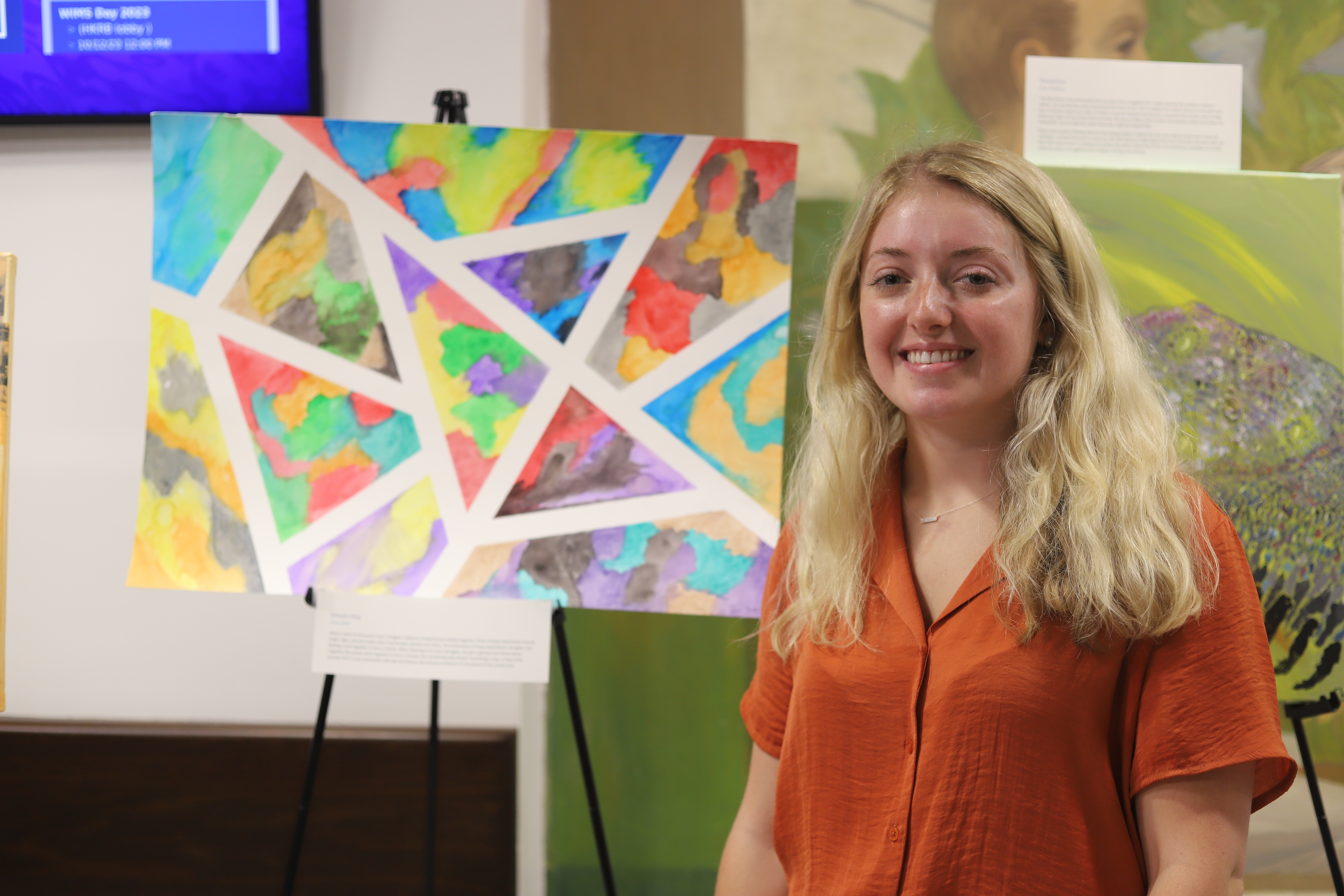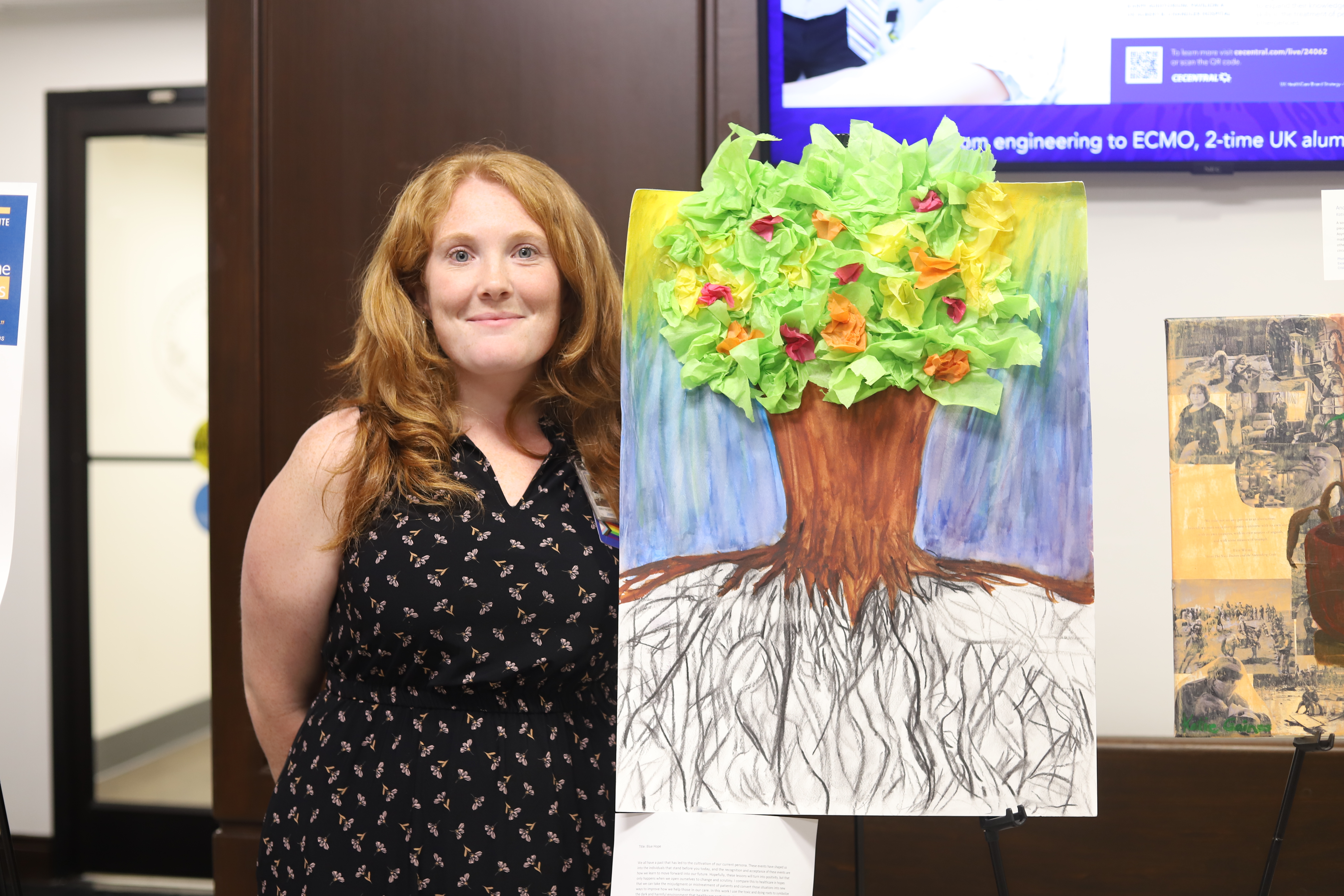Learners from the University of Kentucky College of Medicine were presented an opportunity to express their creativity and convey their perspectives on important health care topics.
“Etching Away Bias in Medicine,” a narrative series, offered learners the chance to listen to and engage with physicians, dietitians, scientists, patients, and artists. Over the summer, each participant was given a prompt:
- “We take many forms, but there is only one soul. Think of your soul as water... pour the water into a cube, and the water becomes a cube. Pour the water into a sphere, and the water becomes a sphere. Pour the water into a blue cup, and the water appears blue. Pour a soul into your body, and the soul becomes you." - Neel Patel
Given what you learned during the panel, how would you describe the "soul" of the individuals? How would it be affected by their experiences or issues they dealt with in their lives?
The series included five, two-hour workshops that began with a literary or visual prompt into the topics of obesity and addiction as part a narrative medicine approach to reading, reflecting, and sharing on complicated topics. This exercise was followed by discussions with health care providers from gastroenterology, addiction medicine, and transplant surgery; encounters with patients; and time to work one-on-one with local artists.
The series also included a culinary experience with the Food as Health Alliance, run by director Alison Gustafson, PhD, MPH, and program coordinator Lauren Batey, MS, both registered dietitians in the Martin-Gatton College of Agriculture, Food, and Environment. The alliance focuses on helping train the next generation of clinicians and practitioners to understand the connection between food and medicine. Participating in the narrative medicine series is just one example of collaboration with the College of Medicine to improve training and outreach for students.
Then, through artwork, learners were tasked with depicting how the “soul” of individuals they interviewed would have been affected by their personal experience with bias and stigma.
“We wanted to do something where we combined talking about difficult topics, the power of creating something, and getting a glimpse into someone else’s life,” said April Hatcher, PhD, professor of neuroscience, who spearheaded the project. The series was made possible through a collaboration among the UK College of Medicine Office of Diversity, Equity, and Inclusion and the New York Institute of Technology (NYIT).
"The narrative series collaboration between UK and NYIT provided space for participants to explore different perspectives in medicine,” said Grace Macmillan, a third-year NYIT medical student. “Students had the opportunity to use narrative and artistic means to investigate and challenge stigmatized medical issues."
Noor Ali, a second-year student at the UK College of Medicine, said she was impacted by the vulnerability she discovered among patients and providers. She created a print conveying the power of community in patient care. Her message, “stronger together,” was displayed prominently with typographic elements.
“There’s so much humanity in medicine,” Ali said. “Not only do obesity and addiction really impact people in Kentucky, but they are topics that you can’t just look at through one lens. You have to recognize that it’s just so much more than the person sitting in front of you.”
On Aug. 17, she and her fellow participants presented their artwork in the William R. Willard Medical Sciences Building. Staff, learners, and faculty – including Luke Bradley, PhD, acting chair of neuroscience – popped by to view the pieces and learn from various perspectives.
“It was fantastic to see the creativity and artwork produced,” Dr. Bradley said. “It is clear that this activity engages the learners and enriches their learning experience.”
Kate Jones, a graduate student in the UK College of Medicine Department of Toxicology and Cancer Biology, created a mixed-media piece of a tree, which represented the good that can come from personal, patient-centered health care. She intentionally made the roots lack color and contrast, but the leaves of the tree were bright and vibrant.
“I’ve seen a lot of negativity in health care,” Jones said. “But I’d rather take it and say, ‘OK, what was wrong with this scenario and where can we move forward?’ There can be very negative times, but the best thing you can do is try to make something beautiful through patient connection.”
Drew Smith, a second-year UK medical student, found the narrative series “eye-opening” because she heard directly from people’s personal experiences. She painted a mosaic of many colors, which represented patients’ ups and downs during their health care journeys. Each part of the mosaic included different colors, with the bright colors showcasing positive experiences and dark spots showcasing the dismal moments.
In her art description, Smith said, “When I think of someone’s soul, I imagine a lifetime of experiences melded together.”
To Dr. Hatcher, the results from the series brought her joy and a “great sense of pride” that learners took away so much from the project. It also reminded her how important it is to allow medical and graduate students to express themselves creatively.
“We never would have known their perspectives had we never asked them,” said Dr. Hatcher.
Dr. Hatcher and eight learners completed projects over the summer. To read artist statements and view artwork, click the links below:
- “Light and Dark,” by Sameer Ahmed
- “Forged in Togetherness,” by Noor Ali
- “My Glass Container,” by Supriya Challa
- “And to Prosper,” by Katie Gaines
- “Metamorphosis,” by April Hatcher
- “Blue Hope,” by Katelyn Jones
- “Mosaic Map,” by Drew Smith
- “The Color Wheel,” by Grace Thomas
- “Perspective,” by Court Waterbury
Thank you to those who helped make this project possible: Jason Akhtarekhavari; Danielle Anderson, MD; Lauren Batey, MS; Sara Brown; Meera Gupta, MD; Alison Gustafson, PhD, MPH; Charla Hamilton; Courtney Perry, DO; Jeanette Tesmer; and Katie Twist, MD.
Thank you to the NYIT collaborators in the project: Grace MacMillan; Julia Molnar, PhD; and Richard Morgan, DO.
A special thank you to the patients who volunteered their time and stories in this narrative series.


